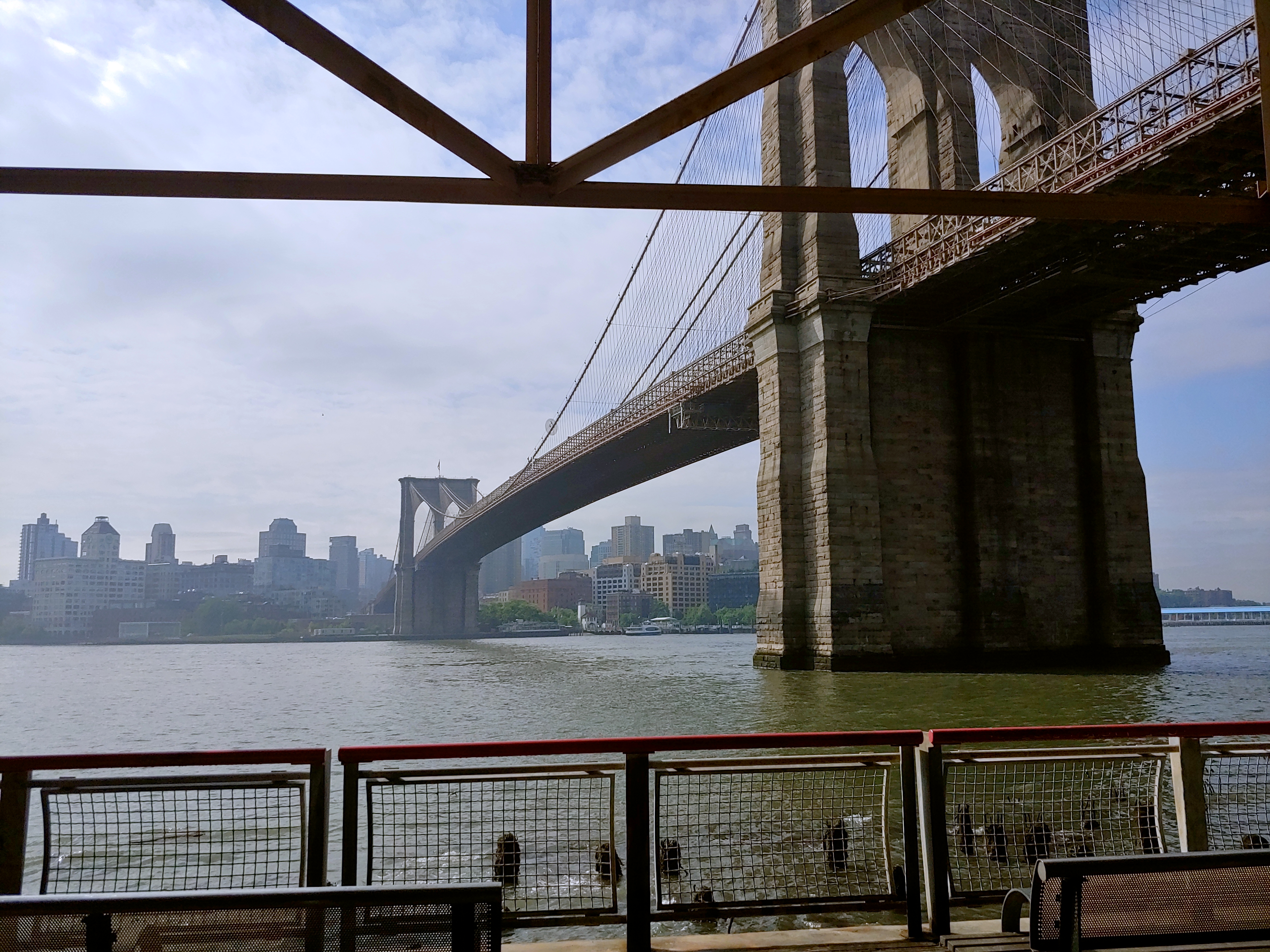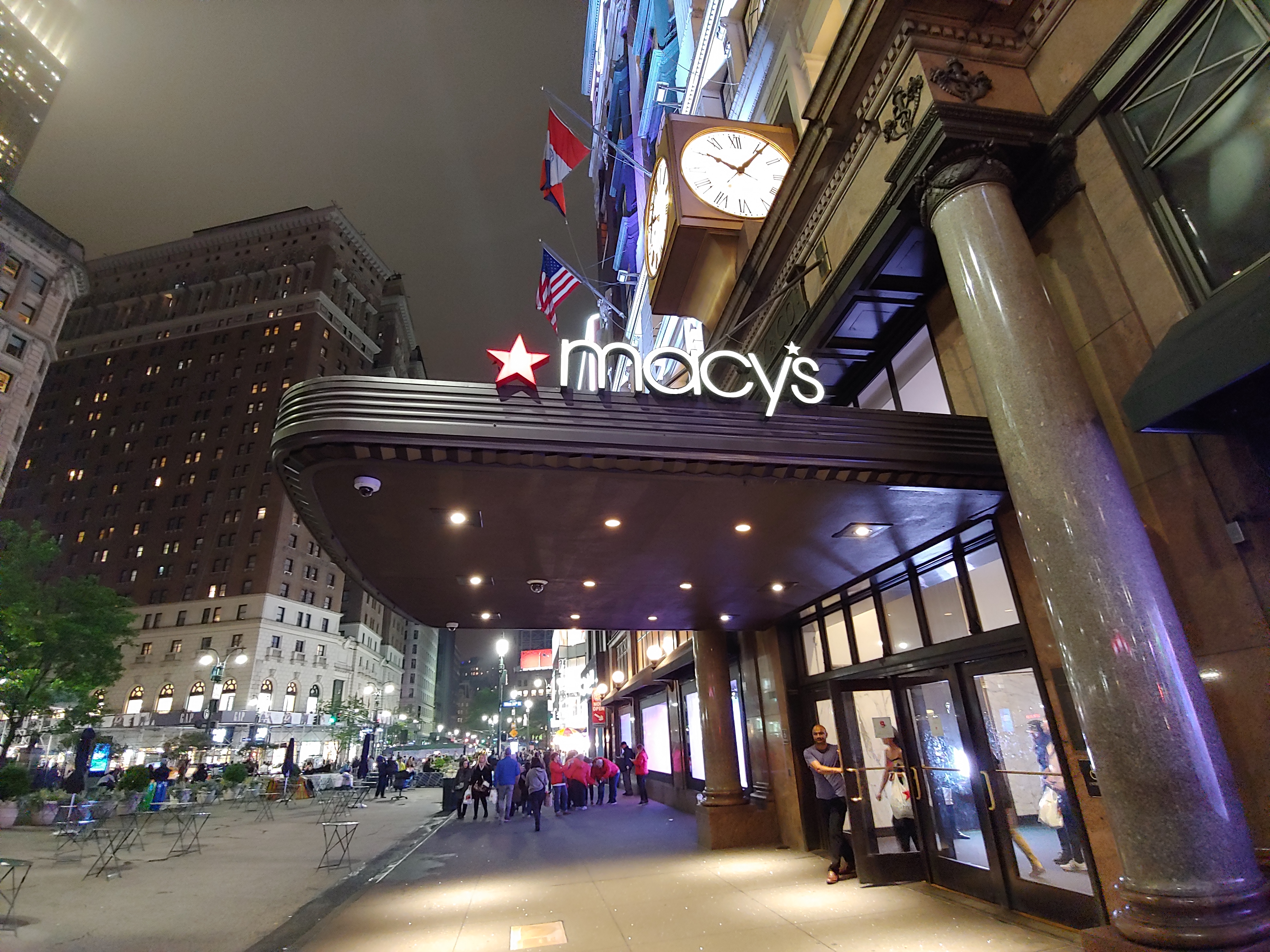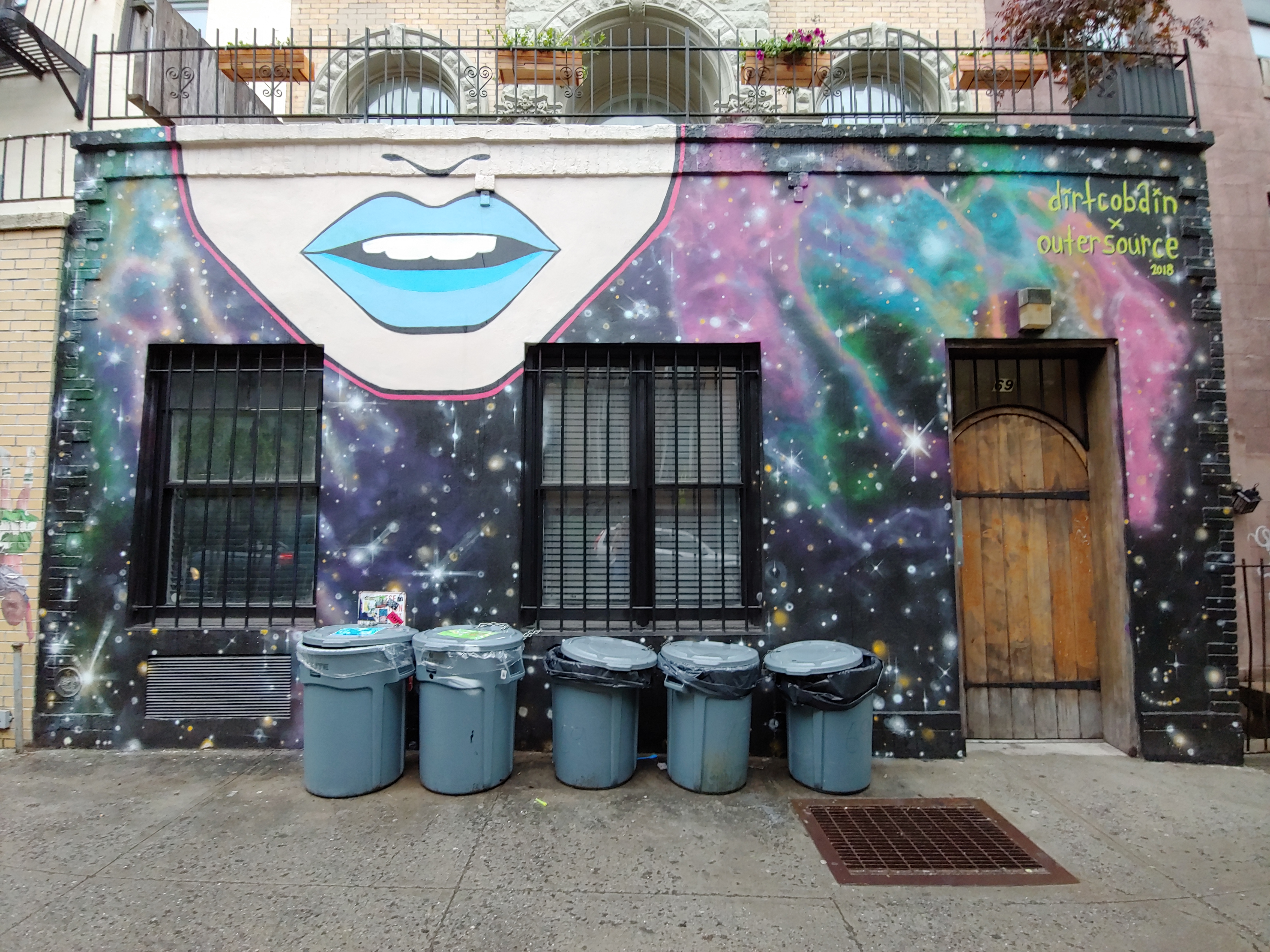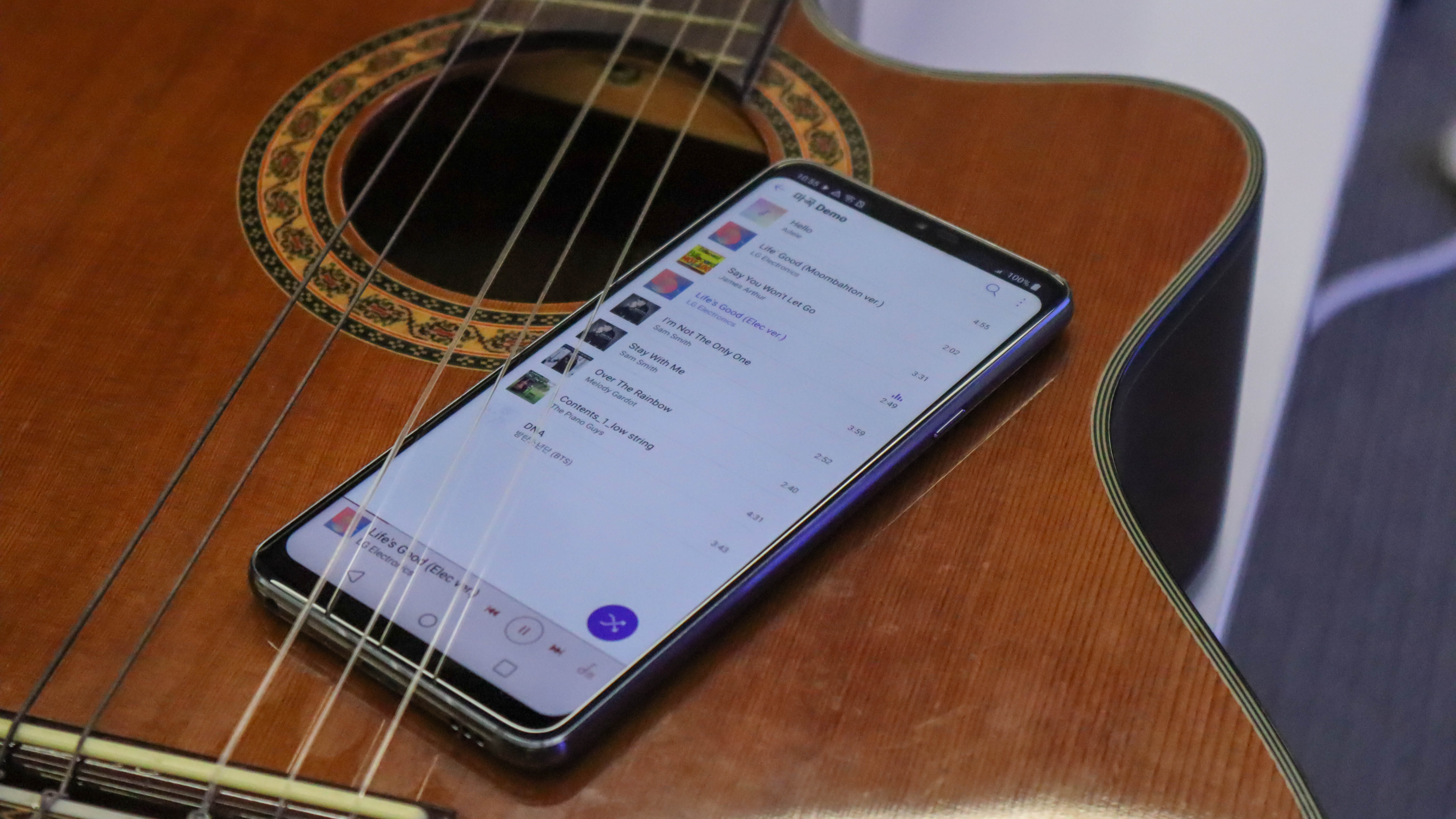Why you can trust TechRadar
AI-powered cameras
- Dual-lens 16MP rear camera, one with an ultra-wide field of view
- AI software tries to understand subject and adapts the settings
- Super Bright Camera offers 4x the brightness at a quarter the resolution
- 8MP front-facing camera vastly improved over past LG phones
LG G7 ThinQ brings impressive specs to its camera hardware and combines it with AI software in an effort to actually understand what’s in front of you. The machine learning tech categorizes subjects into 19 different shooting modes, tweaking colors and brightness along the way.

Launching the AI camera software triggers a flurry of guesses as to what the subject is: person, animal, food, etc. It gets even more granular with these details, trying to guess specific product names and animal species, for example.
Sometimes it’s right and adjusts the camera settings accordingly; more often though it’s way off and a bit comical. It’s hard not to laugh when the AI camera guesses that your meat-filled sandwich is a poodle. At least we hope it was wrong.
While the AI smarts inside the LG G7 do allow it to adapt the camera's settings in a positive for many of your snaps, the erratic object guessing cheapens the experience and detracts from what is otherwise a solid smartphone snapper.










The Super Bright Camera is more precise, automatically detecting low-light situations and amping up the brightness by four times compared to conventional pictures, and even twice as bright as the LG V30S ThinQ ‘Bright Mode’.
The trade-off here is that photos are going to be 4MP, and 4K UHD video is cut down to 1080p. The Huawei P20 Pro does something similar with its 40MP camera, outputting 10MP photos. (See the math? Always divide the photo or video resolution by four.)
Photos are brighter in those mode, but certainly muddier. You won't regret the 4MP pictures over shadow-filled dark photos, but you won't be wowed. You'll simply learn how important proper lighting is, and be left with the thought "I should have taken this photo in daylight".
Sign up for breaking news, reviews, opinion, top tech deals, and more.

The 16MP dual-lens camera – with an impressively fast f/1.6 normal lens and a f/1.9 wide-angle lens – uses a pair of Sony IMX 351 camera sensors measuring 1/3.1 inches. This is smaller than the average camera sensor of a flagship phone (The S9 camera has a 1/2.55-inch sensor and the Pixel 2 has a 1/2.6-inch sensor).
LG says it doesn’t need larger sensors to achieve impressive results. But our side-by-side tests beg to differ. LG has a really great camera. It's just not as good as its chief competitors. At fault is the thinner design and lack of a significant camera bump on back.
It came down to a battle between LG's design team and camera team. In the end, the design team won with an elegant, smoother look to the phone, but everyone else lost with photos that are poorer than they had to be.
Here's what we like about the LG camera that no other recommended phone can do right now: take wide-angle photos. We're able to capture more of what’s in front of us thanks to the 107-degree field of view (FoV) of the second rear lens; a typical camera lens has a field of view of 71 degrees. We only wish this wider camera also had the optical image stabilization that is on the main camera.
The 107-degree FoV is tighter than the G6's 125-degree FoV, but we noticed less fisheye distortion around the edges (there's naturally some, but only noticeable to a camera-trained eye). Because of the expanded framing, the LG G7, in the right lighting conditions, will actually get some of the most pleasing photo compositions out of all of the phones we tested. The Pixel 2 and others have smaller fields of view, requiring you to back up to get everything in the shot.
We also tested the LG G7's portrait mode thanks to the normal and wide-angle lens combo. The software-blurring effect was able to properly blur most everything in the background, though it did have trouble between hair and the background. That's typical of smartphone camera. More novel, the LG G7’s portrait mode doesn’t crop in on the normal frame because of this dual-lens array. This has been helpful when framing up bokeh-rich portrait photos.

The 8MP front-facing camera is vastly improved over prior LG phones. You won't be able to go back to the 5MP mess that the company held onto for a generation too long. Its f/1.9 and 90-degree field of a view provide a crisp enough and adequately wide enough selfie shooter.
It uses a new sensor, the Hynix SF846, instead of the usual Sony sensor. Colors and skin tones appear accurate, though the lack of Super Bright Mode on the front-facing camera means you need ample light. When there is enough light, the detail is on par with what we got out of Samsung Galaxy S9 front-facing camera.
Video is another small highlight if you haven't played with the LG V30 before. It's able record 4K – this time with HDR video capture for absorbing more color – and uses LG's cinematic tools.
Its was fun testing the G7's ability to slowly and smoothly zoom into any part of the screen, not just the center in a jerky motion like on every other phone. Super Bright Mode is present, here, too, if you're okay with 1080p. You'll also find video can record at 240fps in 720p for slow motion. It's not the super slow mo that we've liked on newer Samsung and Sony phones, but the videos look okay here in HD.
Boombox speaker
- Loud Boombox speaker provides deep bass
- DTS:X 3D Sound and 32-bit HiFi Quad DAC
The G7 ThinQ includes what LG calls a Boombox speaker, and it’s plenty loud. It uses the entire phone to pump out rich bass, and it reverbs for an even more powerful sound when resting on a table or, even better, a hollow wooden box or guitar.
No, it's not as powerful as a Bluetooth speaker, but there was a noticeable difference when it was sat next to the Samsung Galaxy S9 playing the same song in our tests. The resonance chamber, which spans the entire handset, isn't something we'll use everyday, but in a pinch without a Bluetooth speaker, it can serve a purpose.

The phone is also filled with some of the best audio specs, including DTS:X 3D Sound through any wired headphones, and a 32-bit HiFi Quad DAC with 50% reduced noise. You’re going to be able to hear the difference if you’re an audiophile.
The one problem we see is the G7 has a single bottom-firing speaker, so it’s too easy to cover up the speaker grille when holding the phone and watching YouTube videos in landscape mode. Again, this is another design decision that was meant to keep the phone svelte, when we'd much rather have additional functionality.
Current page: AI cameras and Boombox speaker
Prev Page Introduction, design and display Next Page Specs, software and battery life
